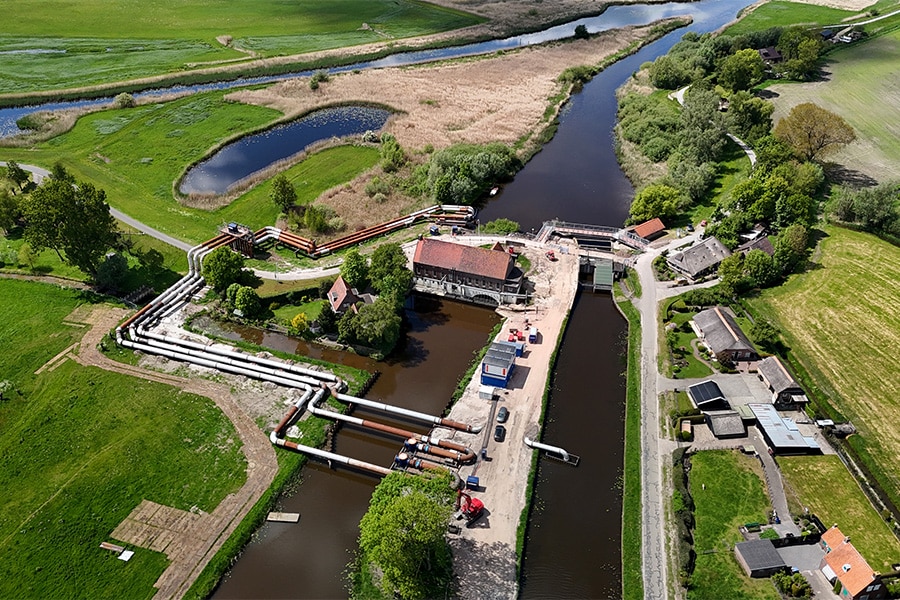
Pump technology expert develops fish-passable pump
At the Dutch branch of the company, expertise also lies in the water market. "Not surprising," according to Ronald Lammerink and Jan Vervoort, sales engineers at Flowserve, "since in the Netherlands we have traditionally fought against and lived with water."
"With the dedicated team of our Water Unit, we take into account the specific needs from that market. Both in terms of customer contact and operational execution, we can therefore optimally serve the water market," says Vervoort.
Fish passable pumps
An important aspect with many water boards and civil contractors is the application of "fish safe" pumps, from the European Water Framework Directive, because the Netherlands has many fish migration junctions. "People are not always aware that existing pumps can be upgraded to make them suitable as fish-passable pumps," says Lammerink. "Flowserve developed a new impeller shape that allows pumps with a propeller impeller (also called an axial impeller) to be optimized for fish passage." In addition to the unique impeller, Flowserve has also designed a steel pump housing with patented integrated delivery elbow for metal pumps. Both developments can be applied to both new and existing pumps. Also, Flowserve can now make a concrete volute pump with propeller hydraulics more fish passable. "With a third of the investment cost of a new pump, you make an existing pump and thus a pumping station fully fish passable."

Innovation is the key to success
"Continuing to encourage this kind of innovative development is the key to success," says Vervoort. "Especially in the context of circular thinking. There are many pumping stations in the Netherlands that are more than 50 years old, where converting the existing installation provides a significant advantage over new construction. It saves on costs and conversion time, while also saving on GWW, infrastructure, civil and electromechanical work. By combining upgrading an existing pump with major maintenance, it ultimately benefits the availability of a pumping station." With this low-risk approach, Flowserve clearly has an edge. Moreover, in the aggregate, it is also CO2-reducing.
Demonstrated fish passability ensured
"Naturally, the fish-passable pump was extensively tested and found to be good," says Lammerink. "Our experts did a lot of research, which - after permission from the Ministry - was concluded with a practical test with 1,500 live fish. This demonstrated the fish passability of the new inner workings. Together with engineering firm Sweco, Visadvies and the University of Twente, we shared the findings with Rijkswaterstaat, other engineering firms, the NEN and some customers in the water board sector and looked at where we want to go. We set ourselves strict requirements and laid them down. After this, the NEN, together with all stakeholders, took charge and the standard was determined. This is how the NEN 8775 came into being." Several projects have already been carried out with the pumps (re)built by Flowserve. "We are currently working on the 'Afsluitdijk' project. For this project we have developed the largest fish-passable pump within Europe to date. We are supplying six pumps of that design for this project, each with an impeller with a diameter of 460 cm," concluded Vervoort.



